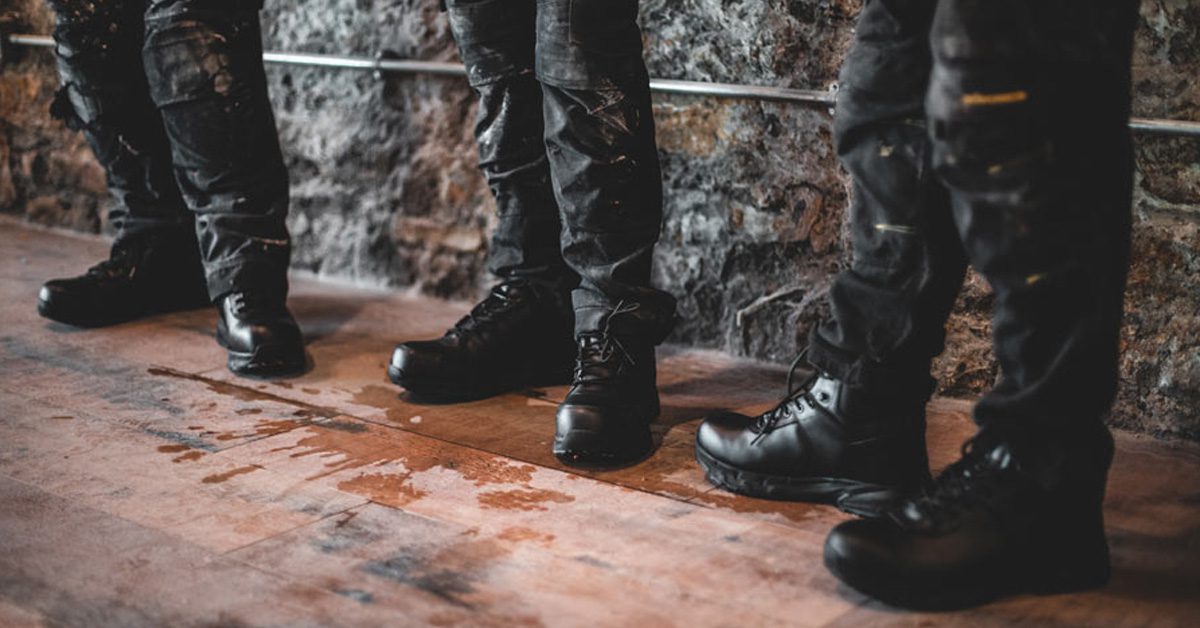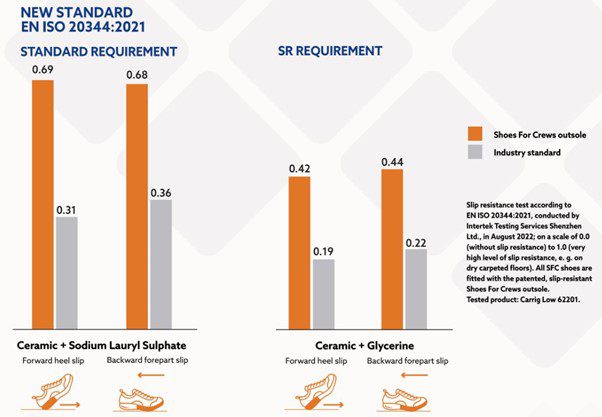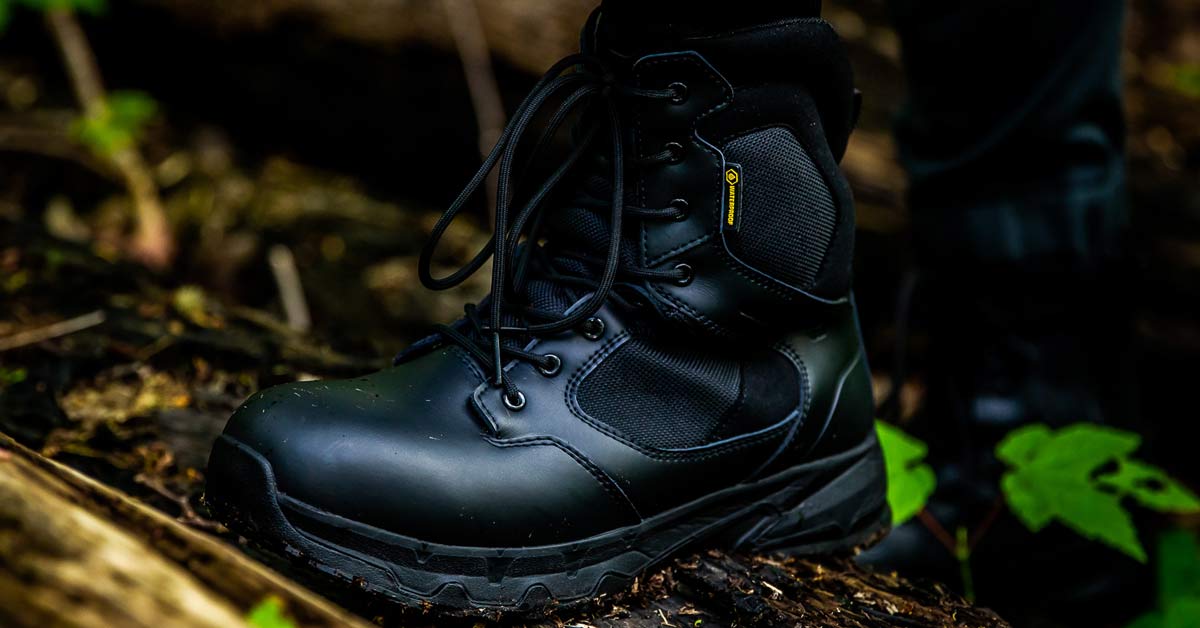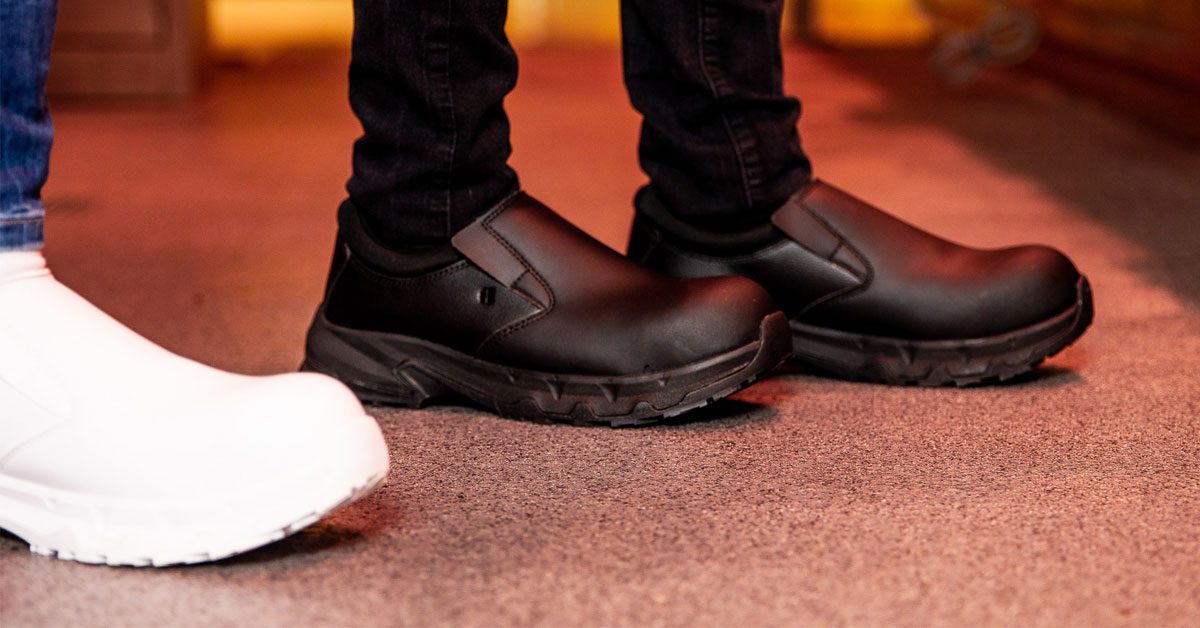In the last decade, the market for slip-resistant footwear has changed significantly, especially with new materials coming on the scene. The workplace is also evolving at a faster rate and looks much different compared to previous years. More women are at work than ever before and many manufacturers are crafting footwear specifically designed for their needs with lighter, more stylish shoes being the preferred choice.
Along with these market changes, slip-resistant footwear standards have also been tested and proven effective time and again. One important fundamental change that stands out is the implementation of the new European PPE Regulation. Europe is the world leader in the use of PPE (personal protective equipment), and the revision of such safety standards will have a positive impact on the global market, including the UK.
In this article, we will focus on and discuss how EN ISO 20344:2021 has changed. We will give you the most important and updated information you need to know to make an informed decision about your company’s next workplace footwear purchase.
What does ISO stand for?
The ISO (International Organization for Standardization) standards were put into place in 1946 to establish levels of quality assurance in the service industry, product development and corporate management that allowed companies to demonstrate their excellent results in a straightforward manner. Thanks to those standards, which were defined by 781 committees and subcommittees and distributed among 164 countries, companies can now compare themselves equally.
Just as technology and the needs for specific markets are constantly changing, the ISO standards evolve in order to adapt to each industry. Due to those factors, the standards are revised and updated every so often according to the same rate as companies and consumer demands.
What regulations were in place for EN ISO 20344:2021 before the change?
The test procedures for safety footwear slip-resistance and their corresponding certifications have been changed. EN ISO 20344:2021 focuses on teams that wear PPE and it was published as a way to update the previous standard, EN ISO 20344:2011.
Basic requirements for work shoes were based on design, slip-resistance, materials used and water resistance, to name a few. Shoes that met these requirements were labelled as follows: SB: safety shoe with basic requirements
- PB: protective shoe with basic requirements
- OB: occupational shoe with basic requirements
Work shoes that met slip-resistant footwear standards received one of the following three classifications:
- SRA: work shoes that provide slip-resistance on a ceramic tile floor with lauryl sulphate
- SRB: safety shoes that provide slip-resistance on a steel floor with glycerol
- SRC: work shoes that combine the slip-resistance of SRA and SRB, providing the highest slip-resistance
In order to ensure the quality of safety footwear standards, different positions of the foot were tested on a scale of 0.0 to 1, where 0.0 is without slip-resistance and 1, very high slip-resistance (on dry carpeted floors).
What is new with EN ISO 20344:2021?
The EN ISO 20344:2011 standard was updated recently and it will now be classified as EN ISO 20344:2021. It will continue to improve and strengthen workplace safety footwear against slips and trips. However, any safety shoes that are already on the market will not need to be certified according to the new standard until their certificate expires. EU type certificates have a validity of 5 years.
Previous certifications consisting of ‘SRA’, ‘SRB’ and ‘SRC’ will no longer be used. In addition to the shoe passing a slip-resistant test on ceramic tile with a cleansing agent, companies can perform another slip test which will be labelled ‘SR’ , provided the shoe passes a slip-resistance test on a ceramic tiled floor with glycerine.
Testing footwear on tile flooring best imitates real-life workplace situations. Concerning meeting the requirements to help prevent slip-related injuries in the workplace, the following minimum standards must be achieved:
| Type of Surface | Type of substance | Position of foot | Industry Standard |
| Ceramic tile | Cleansing agent | Forward heel slip | 0.28 |
| Forward flat slip | 0.32 | ||
| Steel plate | Glycerine | Forward heel slip | 0.13 |
| Forward flat slip | 0.18 |





